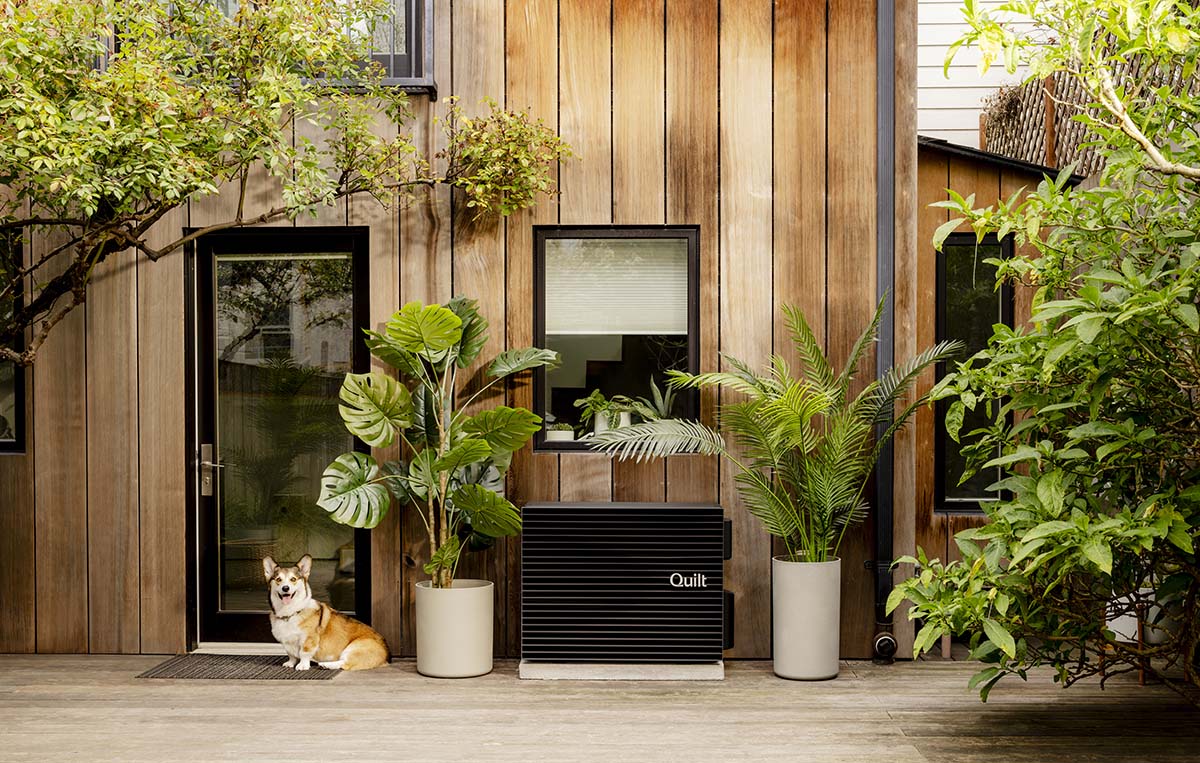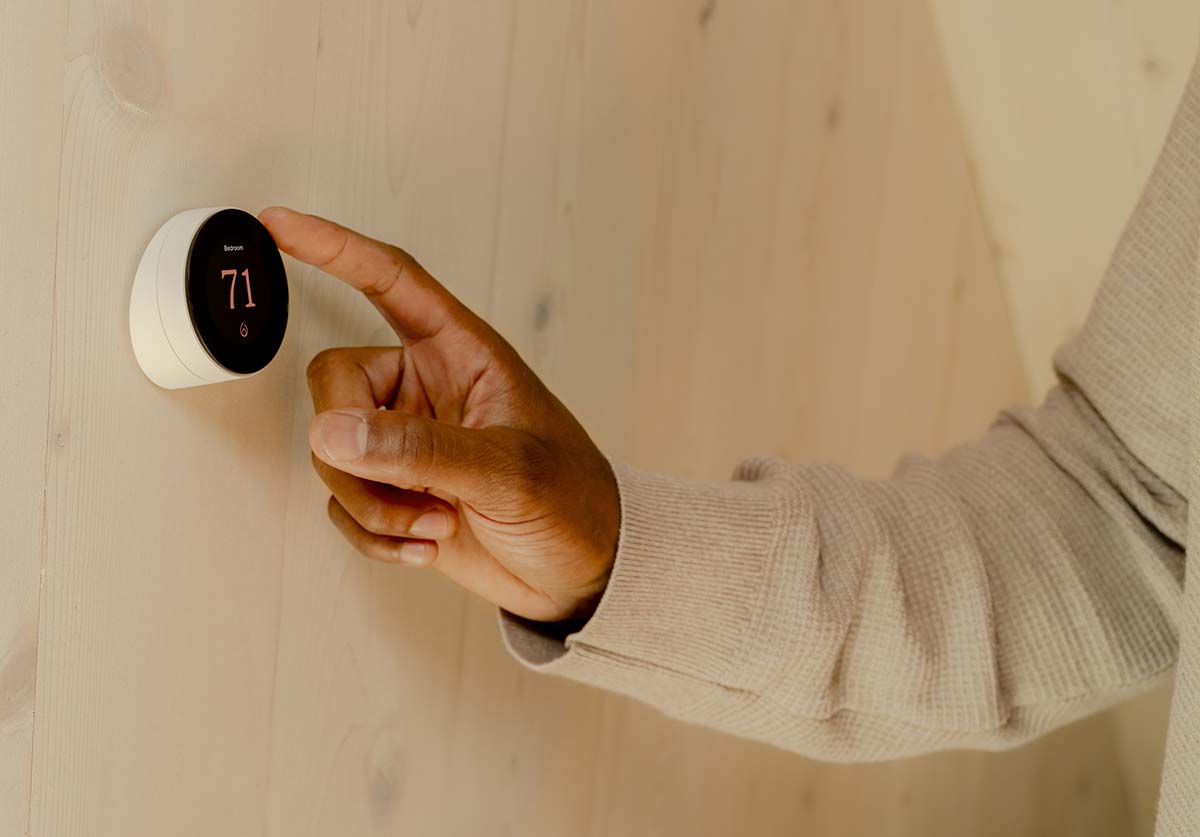co-founder and CEO
Quilt
It’s not every day that a new HVAC company enters the U.S. market. However, thanks to a $33 million investment led primarily by environmental venture capital firms, such as Tom Steyer’s Galvanize Climate Solutions, Quilt is now up and running and offering what it calls a “smart, intuitive, design-forward” ductless heat pump.
“We’ve reached an inflection point in the energy transition, and the shift from gas to electric heating and cooling is not only imperative, but also inevitable. Quilt’s approach to climate control brings homeowners a superior heat pump experience while also reducing their energy bills,” said Tom Steyer, co-executive chair of Galvanize Climate Solutions. “Quilt is proof of our belief that practical, impactful, and economically viable solutions can improve the quality of life for homeowners while also driving the electrification movement forward.”
The Problem
Quilt officially unveiled its new ductless heat pump in May at its headquarters in Redwood City, California. Founded by three former Google employees and staffed with key recruits from Apple, Nest, and Tesla, Quilt aims to accelerate the energy transition by replacing fossil fuels in homes with their all-electric units, which they consider to be an upgrade to today’s HVAC systems.
“Many people don't realize this, but the energy we use in our homes is responsible for 20% of greenhouse gas emissions. That's more than cars. And it turns out that there is one system in the home that dominates energy use: heating and cooling,” said Paul Lambert, co-founder and CEO of Quilt. “HVAC is responsible for 70% of all fossil fuel used in the home, so it's very clear that if we want to accelerate the transition to a better home, we need an all-electric, really fantastic, heating and cooling system for the 21st century. And that’s the heat pump.”
Homeowners typically have two choices when it comes to heat pumps: a central system with ducts or a ductless system. Central systems have significant downsides, said Lambert, as 80% of users experience uneven temperatures in at least one room. Additionally, they lose about 30% of energy through the ductwork. They also heat and cool the entire house, even when most rooms are empty, which Lambert described as an illogical approach.
While ductless systems are already popular in many parts of the world, Lambert doesn’t believe they’ve reached their potential.
“The issues come down to ease of use, smarts, and aesthetics,” he said. “First, they are all these big, bulky plastic boxes. They're just not something everyone wants to put in every room of their home. And you control them with a remote, which kind of looks like it was made in the ‘90s. And since they're so difficult to control, the easiest thing is to just leave them on when the room is empty.”
The Solution
The solution is the new Quilt heat pump, said Lambert, which is versatile and efficient and can be used in all types of homes, from small to large, and in any climate. The Quilt consists of four main components: the indoor unit, the outdoor unit, the Dial smart thermostat, and user-friendly apps for iOS and Android.
The 9,000 Btuh indoor unit is customizable to match different room decors, with front panels in oak and white that can be painted or wrapped. At less than 8 inches tall and approximately 38 inches wide, the indoor unit is designed to fit in tight spaces, making it ideal for installation above windows, said Lambert. The indoor unit also features a color-changing, adjustable accent light. The 18,000 Btuh outdoor unit features quiet operation of 36 to 55 dBA and can be used with up to two indoor units.

QUIET OPERATION: Quilt’s outdoor unit features quiet operation and can be used with up to two indoor units. (Courtesy of Quilt)
The Quilt Dial thermostat is designed for room-by-room control and features a touchscreen OLED display. Measuring only 2¼ inches, the Dial allows homeowners to adjust the temperature in any room from a single screen, offering greater control than traditional thermostats, said Lambert. Additionally, Quilt's apps enable both room-specific and whole-home control, including scheduling routines for optimal comfort and energy efficiency.

SMALL CONTROL: The Dial thermostat measures just 2¼ inches and features a touchscreen OLED display. (Courtesy of Quilt)
“Smart thermostats actually have very little information about the systems they’re controlling, and they’re only toggling the unit on and off,” said Matthew Knoll, co-founder and CTO of Quilt. “We're changing that. We started with class-leading hardware efficiency, and then we vertically integrated software capabilities that have never previously been possible with heating and cooling systems.”
Knoll explained that Quilt's millimeter wave technology enables efficient-energy usage by detecting occupancy changes and adjusting settings accordingly, such as switching to Eco Mode when a room is empty. Using advanced algorithms, Quilt optimizes temperature control based on factors like home conditions, weather, and occupancy schedules. By creating room-specific thermal models and incorporating weather forecasts, Knoll said that Quilt ensures energy savings by avoiding unnecessary preheating. Quilt's sensors also enable remote diagnosis of system issues and proactive maintenance alerts, while over-the-air updates continuously improve system performance and introduce new features.
On the hardware side, the Quilt set out to build a heat pump that is at the top of the line for efficiency, cold weather performance, and sustainability, said Knoll. To that end, the Quilt heat pump utilizes R-32 and offers full heating capacity down to -5°F and 90% capacity down to -13°F. The CEE Tier 2 system features energy efficiency ratings of 25 SEER2 and 11 HSPF2 and is eligible for a variety of rebates.
The Price
Quilt has also set out to change the sales process by offering its heat pump online at one price point: $6,499 per zone, fully installed. Quilt will also calculate any applicable federal, state, and/or local rebates and apply them at the point of sale, so homeowners do not have to fill out any paperwork.
“Our guiding principle is to create the best customer experience, so we've completely redesigned the purchase experience for home heating and cooling,” said Bill Kee, cofounder and COO at Quilt. “It starts at quilt.com, where homeowners can learn about our product and installation process in detail. With some key information about their house, homeowners will get a recommended system size and a fully priced estimate, including installation, with clear next steps and scheduling all handled online.”
Each customer will be paired with a Quilt advisor, who will oversee the entire process, while an in-house team will directly manage Quilt installations end-to-end. According to Quilt, that team is to be staffed with installers who have a proven track record of delivering high-quality work and superior customer service, along with a commitment to facilitating the energy transition. To ensure quality installation, Quilt is providing comprehensive training on products and best practices for participating installers.
“Quilt manages the installation process, and we have recruited some of the best talent in HVAC to install the Quilt system and make sure that each home is treated with the utmost care and respect,” said Kee. “Essentially, we've built a straightforward modern purchase process that eliminates the stress of finding an installer, simplifies the rebate process, and provides clear, transparent pricing.”
Customers in the U.S. and Canada can reserve their Quilt online, with product availability slated for late summer in the San Francisco area, then extending to Los Angeles. Subsequent availability will depend on reservation volume.
“We are at a historic moment in time,” said Lambert. “For the first time in human history, we are moving past fire as our primary heat source. We are also moving past the fossil fuel era to an electric future that is both sustainable and electric, but also just better. The products in our lives will be smarter, cleaner, and more delightful.”



Report Abusive Comment